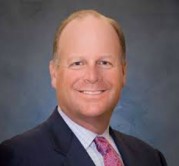Take your team to the next level of knowledge

It all started when I asked the CUES staff—even before I became their CEO in January—to send me several endings for this sentence, “Wouldn’t it be nice if … .”
One of the top responses was something like: “Wouldn’t it be nice if, as a professional development organization, we could do more for our staff development internally.”
We’re having a very strong year so we’ve added some money to the training budget to be able to send people to various conferences for education.
We’ve also involved people as participants—and leaders—in cross-functional, organization-wide initiatives. This pushes these staff to think at a higher and broader level than they would in their typical job function. And that is a form of professional development.
So what does this look like in practice?
Here’s one example: Early this year we involved the entire CUES team in the strategic planning process. In preparation for an all-staff planning offsite, various staff members—not just members of the C-suite—prepared and then presented to the entire team an overview of the economy, an in-depth discussion on our financials, a competitive view of CUES, and a report on the future of learning. The result was better planning plus an opportunity for staff development. We didn’t have to spend training and education dollars or registration fees to get that education for our team members.
In addition, one staff member spearheaded our “culture” project, which helped establish what the new workplace environment would be under new leadership. Other staffers have been trained in facilitation of brainstorming and strategic planning so we can now rely on them when we revisit the plan CUES developed this year. Still other team members were named owners of the key strategies we developed at the planning session and then presented those strategies to our board of directors. (Read more about how that got employees out of their day-to-day work—and also fired up our CUES Board members—in my previous article, “Developing a Cool Culture—With a Twist.”)
How can you translate this for your credit union? I think it’s easy for CUs or any organization to get locked in on budget funds for professional development. And certainly I believe there is great value in attending CUES’ educational programs. However I think it takes formal learning opportunities plus true involvement in the work of your credit union to most effectively stretch your team members and help them get to the next level of knowledge.
One thing to do is look for formal learning programs that help implement back at your credit union what was learned at the event. At CUES’ CEO/Executive Team Network in early November, executive coaches will be on hand to help attendees develop “takeaways” from conference keynotes that they can take back and implement in their own shops.
As items come up at your credit union, reach down into the organization and tap some of the talent that’s there. Don’t hesitate to involve people on projects or work that’s going to take them out of their comfort zone and get them working with other parts of the organization. Get them exposure to what it’s like as you get higher and have more responsibility. Have them work with people who will kindly say, “been there and done that,” and then offer their best advice.
Before we had our strategy owners present to our board, we had three dry runs with the senior management team as the audience. We critiqued the presentations and coached them on how to make it just right.
In all, what you’re after is a learning culture. Classes and involvement in your organization’s key initiatives count. So do simple things like reading, and being a student of our industry. Be sure your credit union has a system for routing industry news publications and other relevant materials—and that your people have time to read them. Also, encourage your team members to ask questions if something doesn’t make sense.
It’s very important to have people think broader than just “this is my job function.” If you try what I’m suggesting in this article, I’m quite sure you’ll see a ripple effect. Staff members who presented to the CUES board, for example, spoke so highly of the experience that we now have a lot of other staffers asking to be considered for future projects. That’s a sure sign of employee engagement—which leads to revenue and a growing organization. The early signs of our efforts to incorporate on-the-job growth experiences with formal training suggest it will benefit CUES as an organization and the members we serve. I suspect it would do the same for your credit union and its members. If you try it, let me know how it turns out.
Charles E. “Chuck” Fagan, III became CUES President and Chief Executive Officer, effective January 2, 2013. Prior to joining CUES, Fagan served as executive vice president of PSCU’s national sales and client relationship teams and helped pioneer the company’s role in bringing emerging payments technologies to its Member-Owner credit unions. Prior to PSCU, he served as account manager at Electronic Data Systems (EDS) and as manager of card services at Virginia Credit Union (VACU). Fagan earned a BSBA in finance from Longwood University in Farmville, Va. He and his wife, Kathy, have two daughters.





